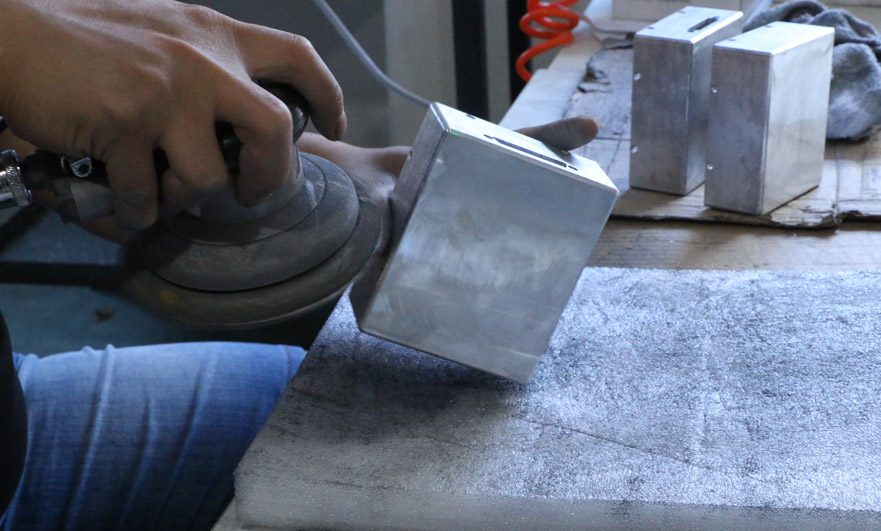15 years one-stop China custom CNC machining parts factory

Hey there I’m VMT Sam!
With 25 years of CNC machining experience we are committed to helping clients overcome 10000 complex part-processing challenges all to contribute to a better life through intelligent manufacturing. Contact us now
 871 |
Published by VMT at Aug 23 2021
871 |
Published by VMT at Aug 23 2021
With the development of CNC machining and manufacturing industry, the polishing process is becoming more and more refined, including mechanical polishing, chemical polishing, electrolytic polishing, ultrasonic polishing, fluid polishing, magnetic grinding and polishing, EDM ultrasonic composite polishing, etc.
Common ones are mechanical polishing, chemical polishing and electrochemical polishing. Different industries have different surface polishing requirements for metal parts of different materials. Therefore, the polishing process of metal surface treatment and the required polishing machinery are different.
What is the polishing process?
Polishing refers to the use of mechanical, chemical or electrochemical effects to reduce the surface roughness of the workpiece to obtain a bright and smooth surface. It uses polishing tools and abrasive grains or other polishing media to modify the surface of metal parts.
The working principle of common polishing process
1. Mechanical Polishing
Mechanical polishing is a polishing method that removes protrusions on the surface of metal processing parts by cutting or plastically deforming the surface of the material to obtain a smooth surface. Whetstone sticks, wool wheels, sandpaper, etc. are generally used. Manual operation is the main method.
Ultra-precision polishing can be used for those with high surface quality requirements. Ultra-precision polishing is the use of special abrasive tools, which are pressed on the processing surface of metal parts in a polishing liquid containing abrasives, and rotate at a high speed. The surface roughness of Ra0.008μm can be achieved by using this technology, which is the best surface roughness among various polishing methods. Optical lens molds often use this method.

2. Chemical Polishing
Chemical polishing is a process in which the convex part of the surface is dissolved in a chemical medium before the concave part to obtain a smooth surface. The method can polish workpieces with complex shapes, and can polish multiple metal parts at the same time, with high efficiency. The surface roughness obtained by chemical polishing is generally Ra10μm.
3. Electrolytic Polishing
The basic principle of electrolytic polishing is the same as that of chemical polishing, that is, it relies on selectively dissolving the protruding parts of the material surface to make the surface smooth. Compared with chemical polishing, it can eliminate the influence of cathode reaction, and the effect is better.
Application of common polishing process in metal parts
1. Mechanical polishing application:
For the purpose of descaling, deburring, welding slag and matting, surface treatments such as sandblasting, shot blasting and wire brushing are sometimes used. The surface is polished with stainless steel wire wheels, which can better avoid iron pollution.
Advantages: low cost, simple operation;
Disadvantages: low efficiency, easy to cause uneven polishing surface, difficult to control polishing time, suitable for small area surface treatment.
2. Chemical Polishing Qpplication:
Remove the remaining burrs after machining of stainless steel, heat-resistant alloys, complex shapes or thin-walled parts, and smooth the sharp edges to improve the surface finish.
Advantages: The chemical polishing equipment is simple and can handle parts with more complex shapes;
Disadvantages: The polishing quality is not as good as electrolytic polishing. The polishing liquid used has a short life and is difficult to adjust and regenerate. During the chemical polishing operation, nitric acid will release a large amount of yellow-brown harmful gas, which is very serious to the environment.
3. Application of electrolytic polishing:
Electrolytic polishing is mainly used for bicycle parts, doors and windows, hardware parts, composite pipes, medical equipment, water treatment equipment, etc. of stainless steel products, especially special-shaped metal parts that cannot be operated by mechanical polishing.
Advantages: hard and soft materials that are difficult to mechanically polish, as well as thin-walled, complex-shaped, small parts and products. The polishing time is short, multiple pieces are polished at the same time, the production efficiency is high, the cost is low, the corrosion resistance of the product surface is increased, and the metal surface will not be deformed.
Disadvantages: complicated pre-polishing treatment, poor electrolyte versatility, short service life, strong corrosiveness, and difficult handling.
Summary
Machinery, chemistry, and electrolysis are all commonly used polishing processes, and the surface treatment of metal parts is indispensable. Due to the different materials, the polishing process we choose is also different. Pay attention to the pros and cons of using different polishing processes, so that we can better guarantee the quality of polishing.
Ready To Start Your Next Project?
Get Instant Quote

Request a Free Quote
Send us a message if you have any questions or request a quote. We will get back to you ASAP!